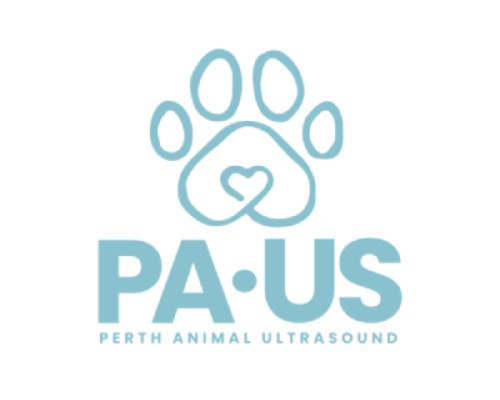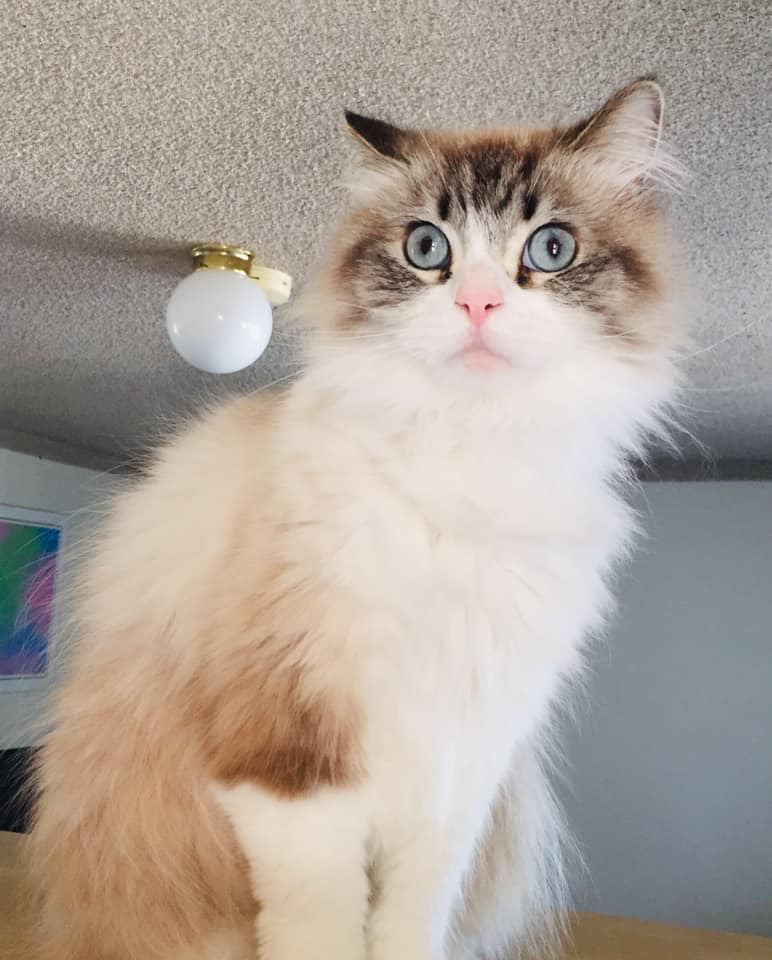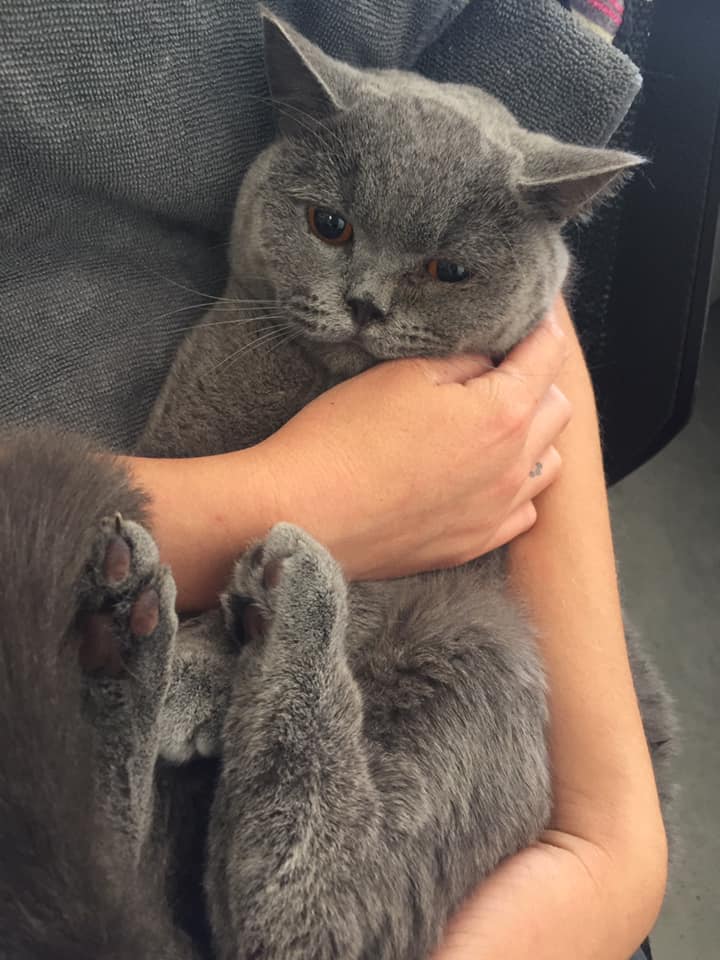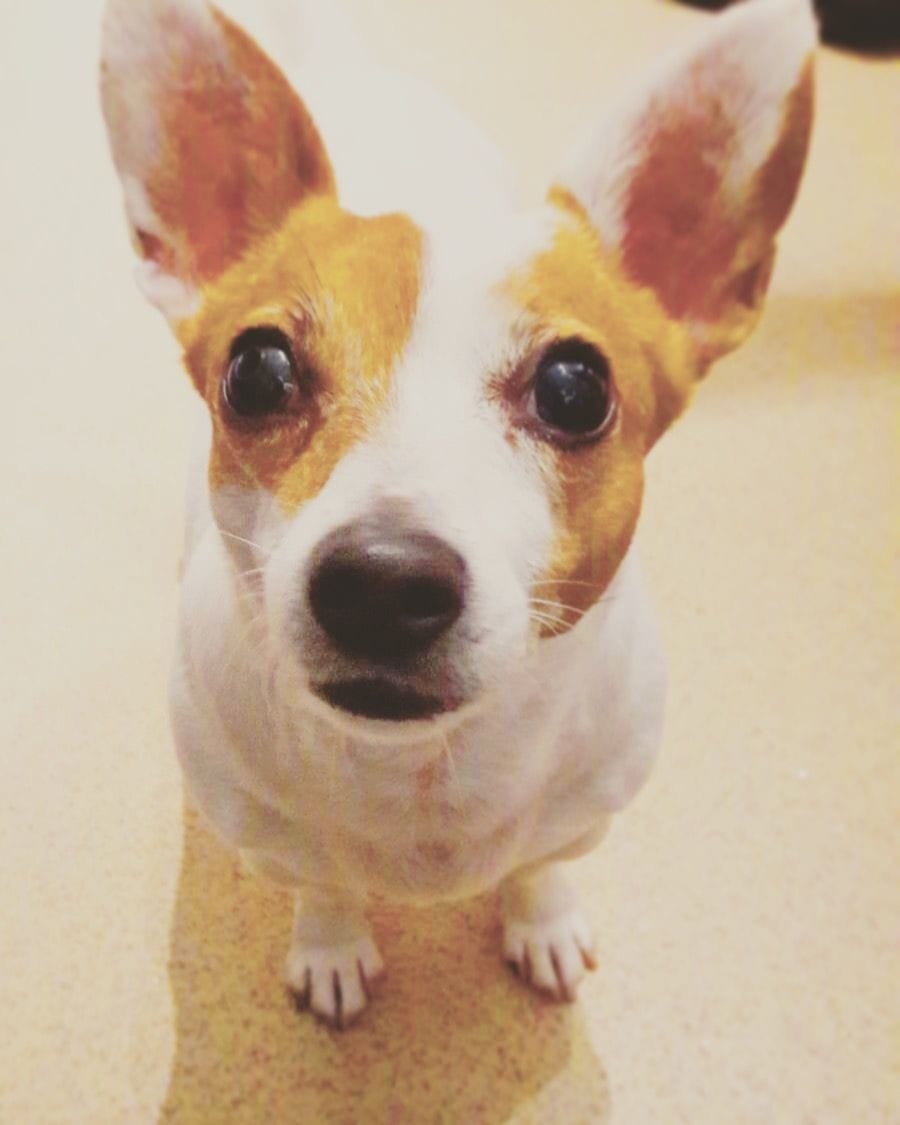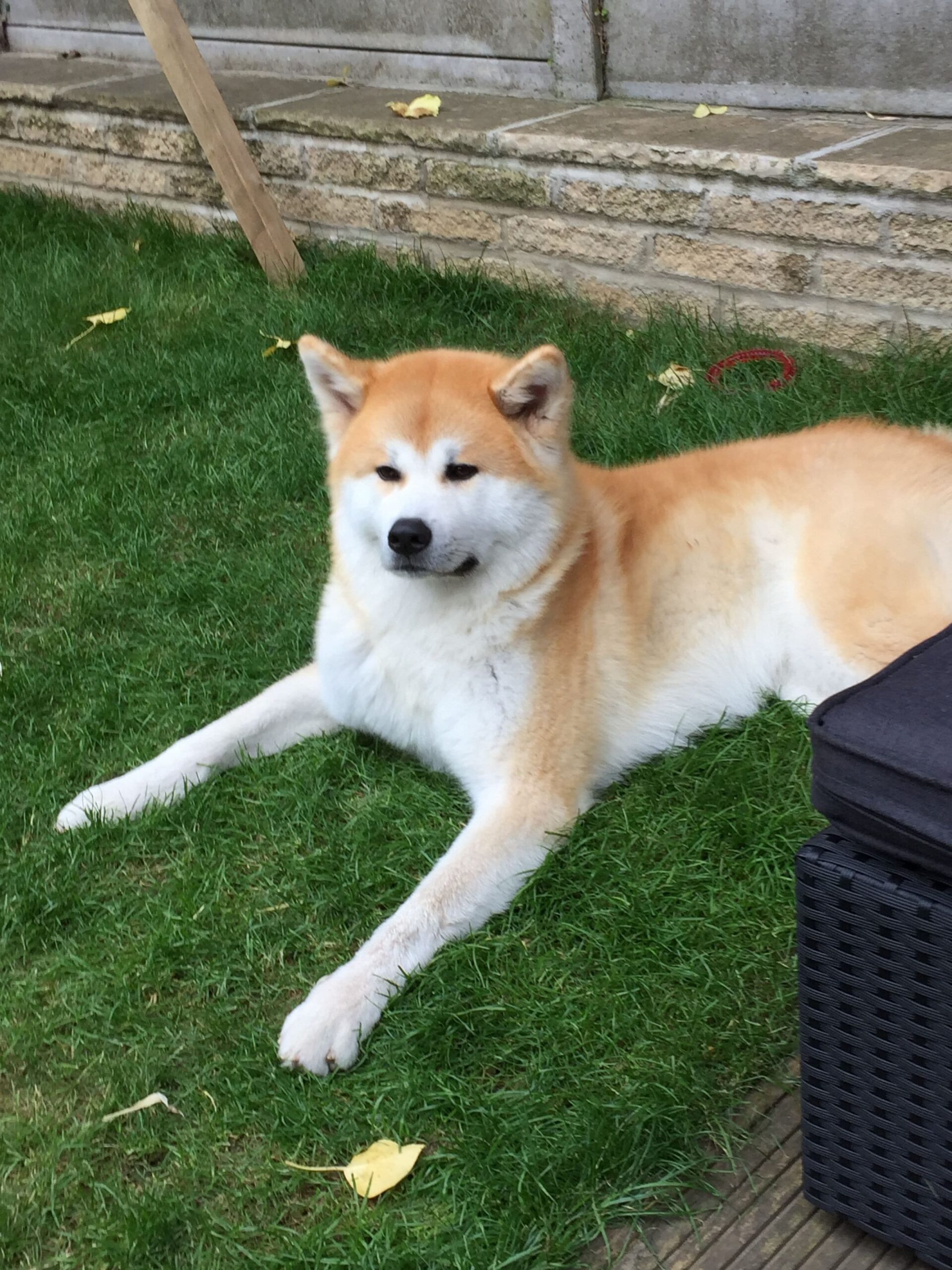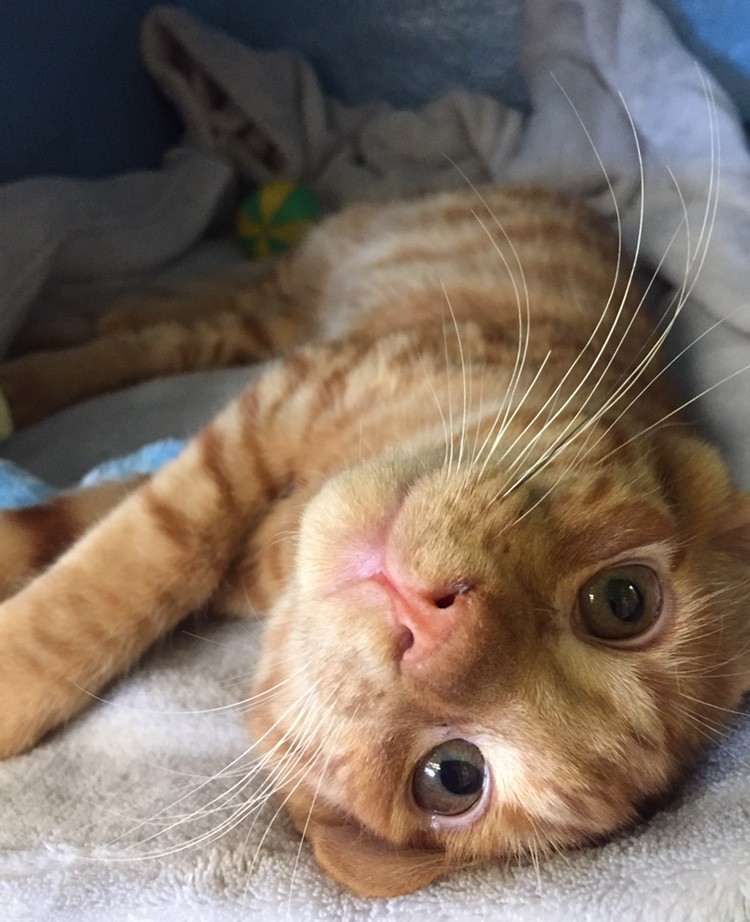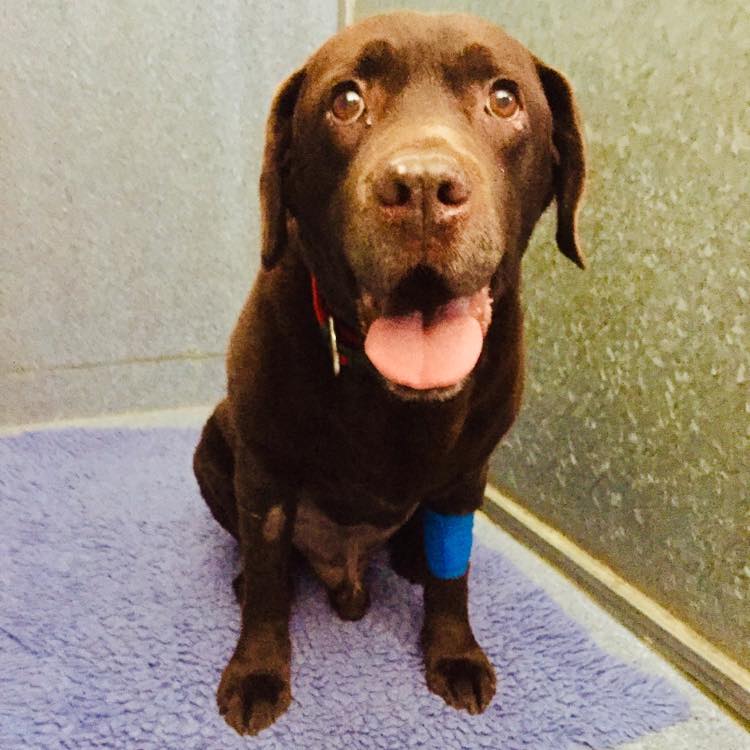What is an ultrasound scan?
An ultrasound scan uses very high-frequency sound waves (not audible to the human ear) to examine the organs of the body. Many sound waves per second are sent from the probe, travel into the body and are sent back to the probe at different times according to the properties of the tissues it encounters. The machine deciphers these returning signals to create a grey-scale image that represents the internal structures, their depth, and density and allows us to assess movement in real-time, such as for the heart. Ultrasound is not harmful, does not involve the use of radiation (unlike X-rays and CT scans), and is the type of scan used for pregnancy diagnosis in people. Echocardiography is an ultrasound of the heart. This is a non-invasive procedure that allows us to ‘look inside’ the heart to assess the internal structures: the chambers, valves, muscle walls and vessels.
Why does my pet need an abdominal ultrasound?
An abdominal ultrasound allows us to assess the liver, spleen, kidneys, adrenal glands, stomach, small intestine, large intestine, pancreas bladder, reproductive organs (prostate, uterus, ovaries, etc.), and lymph nodes. Therefore, there are a number of reasons we might wish to perform an ultrasound of your pet’s abdomen. Often, it is because we need to assess which body system is involved in your pet showing non-specific clinical signs, such as vomiting. Or, it might be a more focused examination of the liver due to elevated values on a blood test, for example: of the urinary tract because of recurrent infections; to investigate weight loss; and many other reasons. By using ultrasound, we can identify abnormalities in the appearance of organs and then take samples for laboratory assessment, where necessary, to yield a diagnosis.
Why does my pet need an echocardiogram?
There are a number of reasons we might wish to perform an ultrasound of your pet’s heart. Often, it is to determine the significance of a murmur that has been detected on clinical examination. Some murmurs are ‘physiological’ (no risk to the patient), whereas others occur as a result of a structural change in the heart (and so are ‘pathological’). In dogs, this is most often a leaky valve, which can lead to secondary stretching of the heart. It is possible to give medications to delay the onset of clinical signs if there is a degree of stretch visible on the scan. Cats, on the other hand, typically show changes in the heart muscle wall, or a ‘stiff ‘heart. The degree of change does not necessarily well correlate to the intensity of the murmur detected, so a scan may even be recommended for cats without murmurs, but with changes in the heart rhythm or breathing changes. Alternatively, we may be investigating your pet’s cough, breathing changes, lethargy or exercise intolerance or may be scanning simply because your pet is an ‘at-risk’ breed for a certain kind of heart disease. For example, certain pedigree cats can be predisposed to a condition called Hypertrophic Cardiomyopathy, HCM, while large breed dogs are more likely to develop Dilated Cardiomyopathy, DCM. Echocardiography is frequently performed alongside other diagnostic tests.
What does the procedure involve?
For an abdominal ultrasound, patients need to be clipped from the back of their ribcage to their pelvis, underneath and along both sides. They are gently held by a nurse on their back or their side, on a specially designed mattress, for the vet to scan. Once all necessary views and measurements are taken, we move the patient to lie on their opposite side. The scan can take anything from 20-45 minutes (depending on the size of the patient and their cooperation). Usually, you will drop your pet at your vet in the morning and the procedure will be carried out during the day.
For echocardiography, patients need to be clipped, on both sides of their chest (and dogs, a small patch under their breastbone). They are gently held on their side by a nurse, on a cushioned table with specially-designed holes to allow access to the chest wall, for the vet to scan. Once all necessary views and measurements from one side are taken, we move the patient to lie on their opposite side. The scan can take anything from 20-30 minutes (depending on the view required and patient cooperation).
Does my pet need to be sedated for the procedure?
Although we try to perform the procedure conscious in many patients, it is sometimes necessary to give them mild sedation, particularly for echocardiography. Only a mild level of sedation is required, just sufficient to relax the patient. Since there is usually a concern for possible cardiac disease with patients undergoing echocardiography, the choice of drugs and doses used are adjusted for this potential risk. Sedation often requires the placement of an intravenous cannula, so your animal may also have a shaved patch on the leg(s) for this. Patients will always be given sedation when samples are required as it is very important they are still for this procedure. Since some patients do require sedation, we ask that they fast on the morning of the procedure. Please allow food until 10 pm the night before, then remove it. Do not withhold water.
Why are other tests necessary as well?
It is often necessary to perform other tests alongside abdominal ultrasound in order to make an overall assessment of the patient. These may include X-rays, blood tests, urine sample, or fluid or tissue sample, depending on the findings. The requirement for further tests will be discussed with you before or after the ultrasound, depending on the clinical signs and/or the findings from the ultrasound scan.
It is also often necessary to perform other tests alongside echocardiography in order to make a wider assessment of the cardiovascular and/or respiratory systems. These may include blood pressure measurements, ECG recordings, and X-rays of the chest. The requirement for these tests will be discussed with you by the vet either prior to the appointment or after the scan (depending on the findings). Blood tests may also be necessary to determine the patient’s overall health – in particular, kidney function if it is necessary to start diuretics or if blood pressure is high — and/or to measure cardiac ‘biomarkers’ which can also indicate stress or stretch on the heart.
When will I get the results of the scan?
The vet performing the scan will endeavour to report the results to your own vet the same day. Sometimes, however, your pet may be discharged from hospital for your vet to discuss the results with you at a later point that day or that week. If a second opinion or experienced input is required, a complete report may not be provided until 1-2 weeks after the scan.
Why might my pet need another ultrasound?
ImagingFirst provides a first-line imaging service for vets around Perth and wider WA. Though we have extensive further training in ultrasound, we are not experienced radiologists. Our main ultrasonographer has been awarded Membership with The Australian and New Zealand College of Veterinary Scientists, which the college defines as:
“…an official recognition of a veterinary surgeon’s knowledge and experience in a designated field of veterinary science. Membership is an indication to the profession and the general public of an advanced practitioner, representing a middle-tier of knowledge, competence and experience in a specific area of veterinary practice. Membership is not a experienced qualification. Membership requires examination with members signified by post-nominals MANZCVS.”
Experienced, on the other hand, undergo the highest level of training with a focused program for 3-4 years at university teaching hospitals or private experienced practices. They can run and interpret not only ultrasound but CT and MRI scans, fluoroscopy and other diagnostic imaging modalities. Upon passing their examinations, they become Diplomats of the European or American Colleges of Veterinary Diagnostic Imaging (DipECVDI / DipACVDI), and/or Fellows of the Australian and New Zealand College of Veterinary Scientists (FANZCVS).
Therefore, while we at ImagingFirst will be able to recognise and diagnose a wide variety of conditions encountered in first-opinion practice, some cases will be deemed to require experienced assessment. At ImagingFirst, we try to maintain great working relationships with these experienced in order to provide the highest level of care to your pet.
What can I expect during my pet's ultrasound appointment?
Confirming your appointment
Once your vet sends us the request, we will contact you to confirm the appointment time and date. You will be requested to pay a deposit of $100 over the phone or via a payment link, which will be deducted from the total on the day of the examination. This deposit is non-refundable in the event of late cancellation (less than 24 hours’ notice).
Location
Our outpatient facility is located at 11/233 Berrigan Drive, Jandakot, WA 6164. PAUS is in the same building as Perth Pet Vet. There are two sets of doors—we have our own entrance through the doors on the right, immediately under the PAUS sign.
Fasting your pet
Your pet should be FASTED for a minimum of 8 hours prior to their ultrasound. Not only does this reduce risk with any required sedation for ultrasound of any region, but for abdominal ultrasound in particular, the presence of food in the stomach or intestinal tract can significantly interfere with our ability to assess the gut and other abdominal structures. There are some exceptions to this rule (e.g., diabetic patients); please check with your vet if you are unsure.
Anti-anxiety medication
If your pet gets stressed or anxious, it may be appropriate to arrange for anti-anxiety medications to be prescribed by your vet prior to visiting PAUS and administered on the day of the scan. These medications can be particularly helpful for cats undergoing cardiac ultrasound, where the types of sedatives available to us are more limited. Please discuss with your vet if your pet normally receives these types of medications or may benefit from them for the ultrasound.
Dropping off and collecting your patient for examination
Please arrive 5-10 minutes before your appointment time to sign the necessary paperwork. We have very limited waiting area space and a small team, so we are unlikely to be able to attend to you or your pet earlier than your scheduled appointment time. When you arrive, you will be greeted by one of our Veterinary Nurses or support staff, who will confirm all your details, scan your pet’s microchip, and run through the consent form with you. This covers sedation, ultrasound examination, and any additional procedures requested by your vet (e.g., obtaining urine, fluid, or samples of organs or lesions by ultrasound guidance). You will leave your pet with us for 30-90 minutes (depending on the booked procedure/s and level of sedation required for your pet), and we will call you when they are ready to go.
Once we call you to inform you that your pet can be collected, you may be advised to return straight to your regular vet or to return home for a scheduled appointment at a later date to discuss the results. With the exception of the diagnosis of urgent conditions requiring immediate attention by your vet, no results are discussed at the time of the examination.
The ultrasound examination & sedation
A complete abdominal or cardiac ultrasound takes between 20-30 minutes, and a bi-cavity examination (both cardiac and abdominal) 40-50 minutes. For us to perform most ultrasound examinations, some level of sedation is usually required. This helps to significantly reduce patient stress and facilitates examination of all structures in the region of interest. Sedation is given “to effect”, which means that your pet should not require a lengthy recovery time before being discharged. We consider any relevant conditions, medications and any other relevant factors when choosing a sedation protocol. IV cannulas are placed on arrival, and your pet will receive oxygen therapy throughout the procedure. The cost of the majority of our procedures includes whatever level of sedation is necessary to carry out the scan(s) effectively. Sedation is NOT administered for pregnancy ultrasounds. Your pet’s fur may be shaved on the leg for IV cannula placement and will be shaved in the region of examination. E.g., for cardiac ultrasounds, fur is clipped on both sides of the chest, and for abdominal ultrasound, from the sternum to the pelvis and to the edge of the abdomen on both sides. For some deep-chested dogs, we also shave the fur over the ribs. If your vet has requested other procedures to be performed (e.g. obtaining urine or fine needle aspirates of an organ or lesion), these can usually be performed on the same day.
Please note we are unable to provide any services other than ultrasound and ultrasound-guided procedures (including nail clips, etc.).
Reports
Your vet will receive a full written report within 1 day of your pet’s ultrasound. We may also contact them by phone if we diagnose a condition requiring their urgent attention or surgery.
Payment
Payment is required at the time of examination. We accept card payments only (no cash). At this time, we are unable to offer Zip Pay or other payment plans.
Important Notice
Perth Animal Ultrasound is a dedicated veterinary ultrasound service that has been operating since 2019 (previously trading as ImagingFirst). PAUS provides ultrasound services to a large number of clinics across the Perth region and recently opened its’ doors in Jandakot to accept patients on an outpatient basis. The service is operated by a vet with several post-graduate qualifications and extensive experience in ultrasound and related procedures, but this vet is not a specialist in veterinary radiology. There are occasions in which it would be appropriate to refer your pet to one of these specialists, for advanced imaging (CT, MRI, other) or for a specialist ultrasound opinion.
If you have any questions, please let your vet know before your appointment with us. If they cannot answer your query, please contact us on 08 9335 5080.
Pre-Appointment Checklist:
- Appointment confirmed via text or email with PAUS
- Deposit paid over the phone or via link
- Pet fasted before appointment (unless advised otherwise)
- Book appointment with your regular vet to discuss results (unless advised otherwise)
